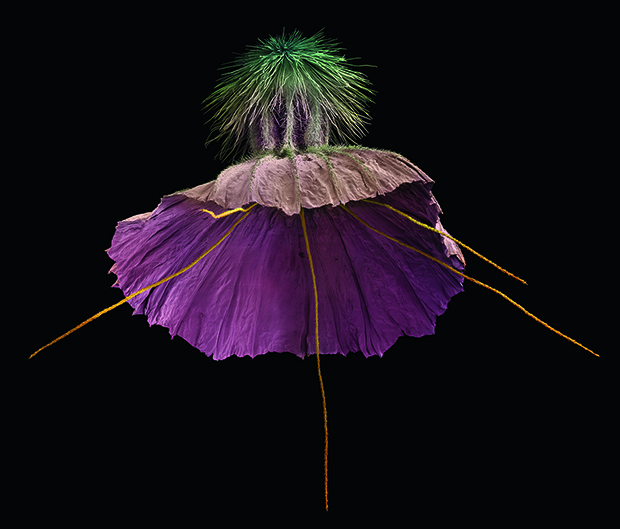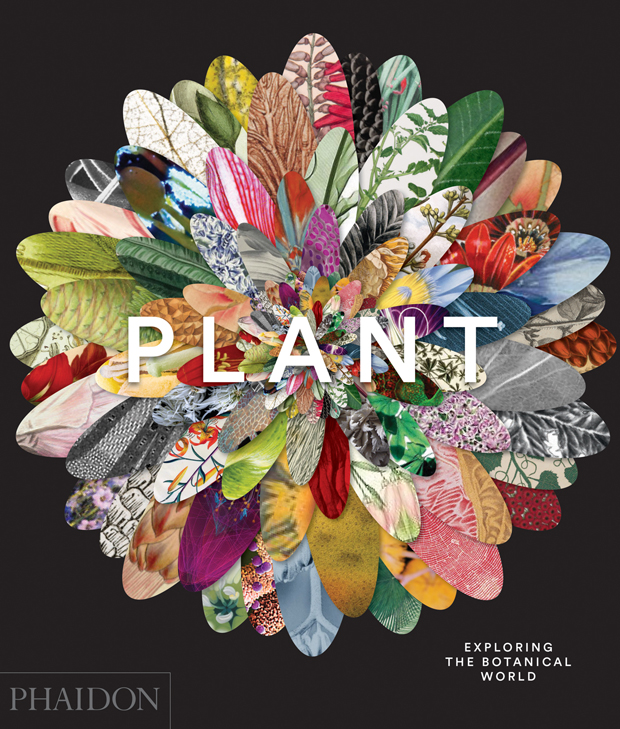
The Art of the Plant – Rob Kesseler
This hand-coloured electron microscope scan shows how beautiful tiny pieces of the natural world can be
Many of the contributors to our new book Plant: Exploring the Botanical World can be divided into two camps. Among the 300 beautiful, pioneering botanical images are works by botanists and fellow scientists, keen to describe and record the natural world in their images. There are also images by artists, more interested in the aesthetic possibilities the natural world afford them.
Rob Kesseler, however, is – to borrow a biological term - sui generis. The Professor of Arts, Design and Science at Central Saint Martins college in London takes a unique approach to plant illustration, which lies halfway between a scientific undertaking and a fine-art project. Here’s how the entry in Plant describes his image.
“What at first appears to be a design for an exotic ballet costume is in fact a vastly magnified micrograph image of a tiny seed of Scabiosa crenata, the pincushion flower, a member of the honeysuckle family. For more than a decade the British artist Rob Kesseler has been working on the frontier between art and science, producing microscopic views of plant material such as seeds and pollen grains, and highlighting how little we know about the mysterious workings of plant propagation.
“Kesseler applies a fine coating of platinum to his specimens before scanning them with a high-magnification scanning electron microscope to produce black-and-white images, which he then begins to tint with thin washes of colour. He does not necessarily reproduce the hues of the objects themselves; instead, he uses colour to enhance the seemingly mysterious forms, revealing their delicate structure. The results are intended to evoke a sense of the unfamiliar and an impromptu symbolism that inspires curiosity and wonder in those contemplating the possible functions underlying the forms. Through his art, Kesseler makes the invisible features of plants visible, and his extreme highlights of nature reveal the extraordinary diversity of plant forms.”

For more beautiful, botanical images buy a copy of Plant: Exploring the Botanical World here.